Coed y Bleiddiau's residents
by Caroline Stanford
For any steam train buff (and who among us is not one at heart!) the idea of staying in a railway cottage hard beside the Ffestiniog Railway in the Snowdonia National Park already sounds like the gates to heaven, but that is not all Coed y Bleiddiau has to offer. No less fascinating than its setting roughly half way between Porthmadog and Blaenau Ffestiniog are the people we discovered have lived there.
Listen as a podcast

Thomas Henry Hovendon
Superintendent of the Ffestiniog Railway
First came Superintendent Thomas Henry Hovendon, a young Irishman who came looking for work in the area around 1860. He clearly impressed the projectors of the line, and in 1864 moved into the newly built cottage, where he lived until his death in 1903. An upright chap with fine whiskers, part of Hovendon’s job was to be the line’s enforcer, ticking off naughty boys who threw mud at the passengers or opened the doors while the train was moving or rode illicitly on the slate wagons. He also reported drivers careless with the lighted coals that flew from their cabin to start trackside fires, and dealt with livestock straying onto the line.
Hovendon had two wives and seven children so Coed y Bleiddiau was a happy (if surely cramped) family home from the outset. It also saw its share of tragedy: only four of the children survived to adulthood. Two died in infancy and his daughter, Maria, was much mourned as a promising and popular local teacher, when she died aged just 18.
During the restoration, we discovered that one of the Hovendons had left his or her mark on a cottage window pane, carefully etching their surname in flowing copperplate script.
Sir Granville Bantock
Renowned composer
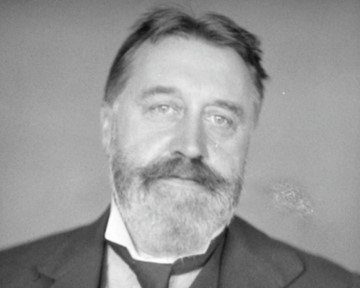
By 1913, the Railway no longer needed Coed y Bleiddiau and it became a holiday let, the broad gauge railways wider afield having opened up Snowdonia to tourists from the Midlands. From 1925, one such, Granville Bantock, was one of the most popular classical composers of the day although now largely forgotten. Bantock had a wide circle of friends in international music circles: he counted composers Elgar, Holbrooke, Sibelius and Delius among his best friends. With Thomas Beecham and Henry Wood, Bantock helped found the City of Birmingham Symphony Orchestra (and Bantock was the first person to be knighted for services to music, in 1930). His music was widely performed, including at the Proms.
Bantock and his family rented Coed y Bleiddiau from 1925. He came to the cottage to compose on a dulcitone he installed there and Myrrha Bantock’s biography of her father also gives the impression that this tiny cottage hosted a succession of Bantock’s celebrated friends. Everyone read a great deal, and recited poetry.
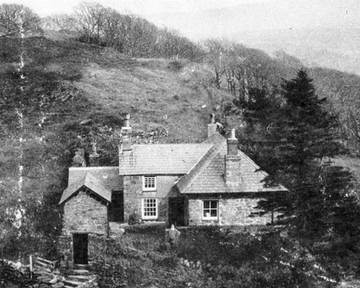
The family bought groceries from Maentwrog, walking several miles through the forest by a narrow pathway. ‘We arranged with the engine-drivers to put us down when we arrived on holiday,’ wrote Myrrha. 'They also used to post our letters; we would stand beside the line outside the house, waving them in the air, and the train would slow down to enable the driver or fireman to snatch them from us without stopping the train.’
Sometimes Lady Bantock’s shopping list and basket were handed to the guard on the Down as it passed, to be returned full of the required provisions on the Up. ‘Our bath was the mountain pool’ and the bucket from the privy was carried to a bog some distance away to be emptied – though never by Bantock himself.
‘No one who stayed at Coed y Bleiddiau was anything but happy’, wrote Myrrah. Bantock himself loved the waterfalls and bathing pools, and walking the misty peaks and ancient sites where children left tributes of buttercups and daisies. ‘Snowden, whose majestic peak dominates the landscape, acts as a friendly beacon to guide the rambler who seeks untrodden ways’, he wrote.
Harry ('Jack') St John Philby
Arabist and maverick
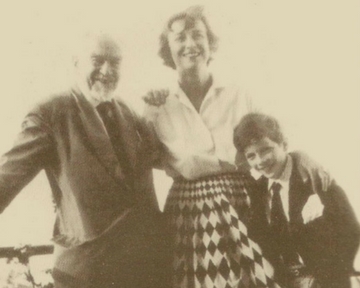
One of Bantock’s many friends was Jack Philby. They both shared a passion for the Middle East, and in 1933 Bantock’s lease on Coed y Bleiddiau was transferred to Philby, backdated to 1930. Philby rented the cottage until 1947. He was a complicated character, a British Arabist, adviser, explorer, prolific author and colonial intelligence officer. At first working for the British Civil Service in the Middle East, in the 1920s he came under the sway of Ibn Saud, the chieftain who eventually united the Arab peninsular.
Philby, who was also known as Sheikh Abdullah, soon began to promote Ibn Saud’s interests before official British policy, and was forced to resign from the civil service in 1924. Advising Saud over the peninsular’s oil deposits through the 1930s, he facilitated the relationship with American oil companies that continues today. Philby liked to adopt Arab dress and customs, and also converted to Islam in 1930.
Philby was more often in Arabia or Palestine than in Wales, but clearly valued the seclusion of the Vale of Ffestiniog, going there with his wife, two daughters and son Harold ‘Kim’ Philby,
later notorious as one the Russian double agents of the spy ring known as the Cambridge Five.
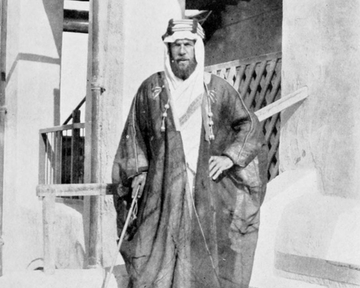
In the 1930s Philby is said to have undertaken secret negotiations with Germany and Spain about Saudi Arabia's role in the event of a general European war, to allow neutral Saudi Arabia to sell oil to neutral Spain, which then would be transported to Germany. Though previously a member of the Labour Party, in July 1939 just two months before Britain and France declared war on Germany, he stood for Oswald Moseley’s right wing, anti-Semitic British People's Party in a by-election. Philby won 2.6% of the vote, and lost his deposit.
Philby kept his lease on Coed y Bleiddiau throughout the war. There is a persistent local rumour that William Joyce, the Nazi propagandist with the cut-glass British accent who sought to undermine British morale as Lord Haw Haw, stayed at Coed y Bleiddiau. Joyce may well have been a friend of Philby’s, but recent research has disproved either that he came to the area or that he referred to it in his broadcasts. Philby’s seventeen-year tenancy of remote Coed y Bleiddiau seems in many ways at odds with his life in the heat of the desert and of Middle Eastern political intrigue, but he clearly valued it, as a remote and secluded base in a cooler clime.
Babs & Bob Johnson
The moss gatherers
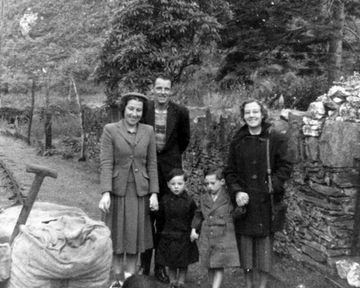
In 1951, Babs and Bob Johnson came to live at Coed y Bleiddiau, and stayed for more than half a century. Bob Johnson worked in the nuclear industry, and he and Babs originally moved from London to Snowdonia for his health, after which he worked on the Trawsfynydd Nuclear Power Station.
The mid 1950s were of course years of renewed activity on the Ffestiniog line, as volunteers restored it to re-open as a passenger service in 1955.The Johnsons became characters on the line in their own right, sometimes offering bed and breakfast to visitors, and several Landmarkers have contributed memories of this warm and engaging couple. Many who have known the Ffestiniog line in recent years will remember the Johnsons.
Babs was a keen gardener; the little garden full of flowers with roses round the porch is still spoken of, and she had a vegetable garden alongside the track just below the cottage. Like the Hovendons, the Johnsons kept goats for their milk, tethered to the line in these years when few trains ran.
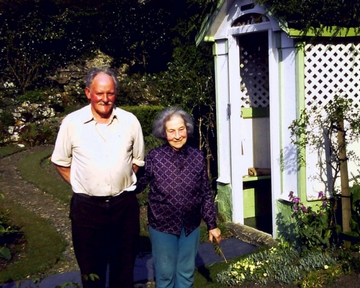
They were also known as ‘the moss gatherers’, since the couple harvested sphagnum moss to supply both Liverpool hospitals and orchid growers. Sphagnum can absorb many times its own weight in liquids and is very acidic, which gives it antiseptic properties that inhibit the growth of bacteria and infection. It has been used for centuries as a dressing for wounds, including through both World Wars when cotton for dressings was scarce.
By the 2000s, Babs and Bob had reached an advanced age. They still parked their three-wheeler car in the forest and walked to Coed y Bleiddiau down the uneven footpath, but life in such a remote spot became increasingly impractical. Their tenure finally came to an end in 2006 when they moved to more suitable accommodation. Like Granville Bantock before them, their ashes were scattered on the slopes of this spot they loved so well.
Coed y Bleiddiau has now been meticulously restored by the Landmark Trust, and is once again painted in the original brown and cream livery of the Ffestiniog Railway. Now anyone who chooses can experience staying in this little cottage with the magic of the occasional steam engine passing right by the front door in this wonderful mountain setting.
Book your stay at Coed y Bleiddiau
Sign up to the Landmark email newsletter to receive information about:
- holidays in historic buildings
- building rescue projects
- key dates for advance bookings of our most popular Landmarks
Sign up